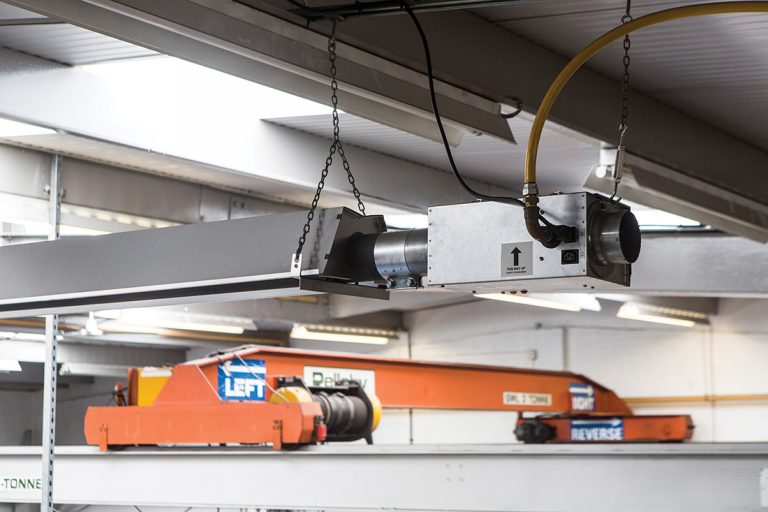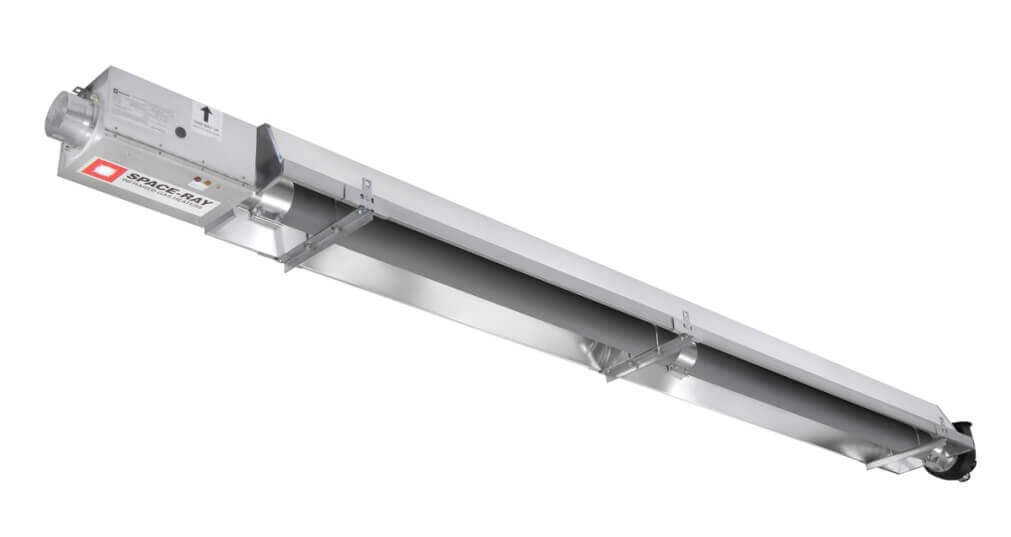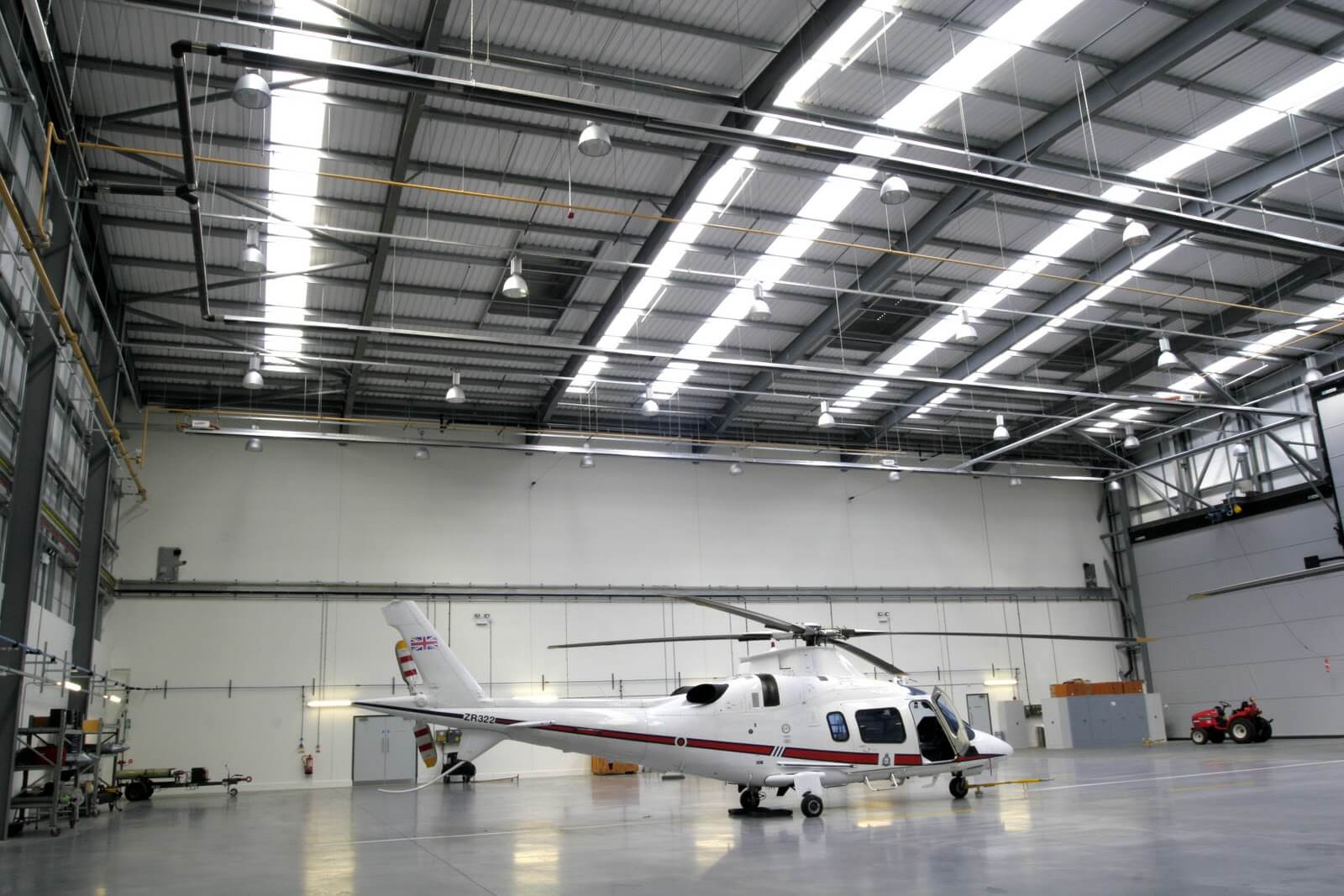Radiant heating is a cutting-edge yet simple heating technology that has been transforming the way we warm industrial spaces. As energy efficiency and sustainability take center stage in modern living, radiant heating has emerged as an innovative solution for achieving comfort without compromising the planet. In this guide, we'll explore the ins and outs of radiant heating, its benefits, and why it’s the future of indoor heating systems.
What is Radiant Heating?
Radiant heating is a system that warms a space by heating surfaces such as floors, walls, or ceilings rather than the air. This method of heating relies on infrared radiation, which transfers heat directly to objects and people in a room. Unlike traditional convection systems that circulate warm air, radiant heating delivers consistent, even warmth without creating drafts or hotspots.
The system works by circulating hot water or electricity through a network of pipes or heating elements embedded in the structure of a building. The heat emitted is absorbed by furniture, people, and other objects, maintaining a stable temperature across the space.
Types of Radiant Heating Systems
There are three m types of radiant heating systems:
Gas Radiant Heating
This system uses uses natural gas or propane to produce infrared heat, which is emitted by radiant tubes or panels. These systems are commonly used in industrial, commercial, and outdoor spaces due to their efficiency in heating large areas.
Hydronic Radiant Heating
This system uses heated water to warm a space. A boiler heats the water, which is then pumped through a network of tubes installed under the floor or behind walls. Hydronic systems are energy-efficient and ideal for larger spaces or entire buildings.
Electric Radiant Heating
This system employs electric heating cables or mats to generate heat. Electric radiant heating is easier to install and best suited for smaller spaces, such as bathrooms or individual rooms, where quick and targeted heating is required.
The Benefits of Radiant Heating
1. Energy Efficiency
Radiant heating is highly energy-efficient compared to conventional systems like forced-air or baseboard heaters. It requires lower operating temperatures to achieve the same level of comfort, leading to reduced energy consumption and lower utility bills.
Hydronic radiant systems, in particular, can be paired with renewable energy sources such as solar panels or geothermal heat pumps to further reduce environmental impact.
2. Enhanced Comfort
Radiant heating provides consistent and even warmth across a room. Unlike forced-air systems that create uneven heating and cold drafts, radiant systems eliminate temperature fluctuations and ensure every corner of a space is comfortably warm.
Additionally, because it doesn’t rely on blowing air, radiant heating is silent and creates a more peaceful indoor environment.
3. Improved Air Quality
Traditional heating systems that circulate air can spread dust, allergens, and pollutants. Radiant heating eliminates this issue, making it an excellent choice for individuals with allergies or respiratory conditions.
4. Design Flexibility
Radiant heating systems are concealed within floors, walls, or ceilings, freeing up valuable space for furniture and décor. There are no bulky radiators or vents to work around, giving architects and interior designers greater creative freedom.
5. Durability and Low Maintenance
Radiant heating systems are built to last. These systems, when installed correctly, can last for decades with minimal maintenance. Electric systems also have a long lifespan and require little upkeep, making them a cost-effective investment over time.
Applications of Radiant Heating
Radiant heating is versatile and can be used in a variety of settings:
• Commercial Buildings: Offices, retail spaces, and restaurants benefit from the even heat distribution and aesthetic advantages of radiant systems.
• Industrial Facilities: Radiant heating is ideal for large industrial spaces, such as warehouses, where traditional heating systems struggle to maintain consistent temperatures.
• Outdoor Areas: Driveways, patios, and walkways can be fitted with radiant heating to prevent ice and snow buildup, improving safety and convenience.
Is Radiant Heating Right for You?
While radiant heating offers numerous advantages, it’s essential to consider a few factors before making the switch:
• Initial Installation Costs: Radiant heating systems require a higher upfront investment than traditional systems, particularly for gas systems. However, the long-term savings on energy bills often offset these costs.
• Installation Requirements: Retrofitting radiant heating into an existing building can be challenging and costly. It is more cost-effective when incorporated into new construction or major renovations.
• Heating Needs: Radiant heating works best in well-insulated spaces. If your building has poor insulation, you may need to address this issue to maximise the system’s efficiency.
Tips for Optimising Your Radiant Heating System
To get the most out of your radiant heating system, keep the following tips in mind:
• Use Programmable Thermostats: These allow you to control the heating schedule, ensuring the system runs only when needed.
• Pair with Renewable Energy: Combine your radiant heating system with solar panels or a heat pump for an eco-friendly solution.
• Regular Maintenance: While radiant systems require minimal upkeep, occasional checks ensure they continue operating at peak efficiency.
Why Radiant Heating is the Future of Heating Systems
As sustainability becomes a global priority, the demand for energy-efficient, eco-friendly heating solutions is on the rise. Radiant heating meets these demands while providing unparalleled comfort and design flexibility. Its ability to integrate with renewable energy sources and smart home technologies makes it a forward-thinking choice for both residential and commercial applications.
Moreover, advancements in radiant heating technology continue to lower costs and improve performance, making it accessible to a wider audience. With its numerous benefits, radiant heating is set to become a cornerstone of sustainable building design.
Radiant heating is more than just a modern heating solution—it’s a long-term investment in comfort, efficiency, and sustainability. Whether you’re building a new warehouse orr upgrading your industrial facility, radiant heating offers a host of benefits that make it worth considering.
If you’re ready to take the next step, consult with professionals, like Tidyco, to determine the best radiant heating system for your needs. With the right installation and maintenance, you’ll enjoy a warm, inviting space for years to come.
Contact Tidyco on 01332 851300 or email [email protected] for more information about our radiant heating systems or complete the form below:



